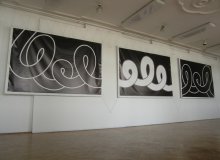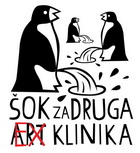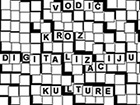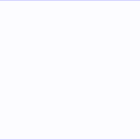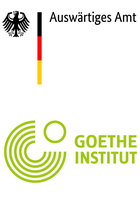Unwanted Mural of (Lesya) Ukrainka
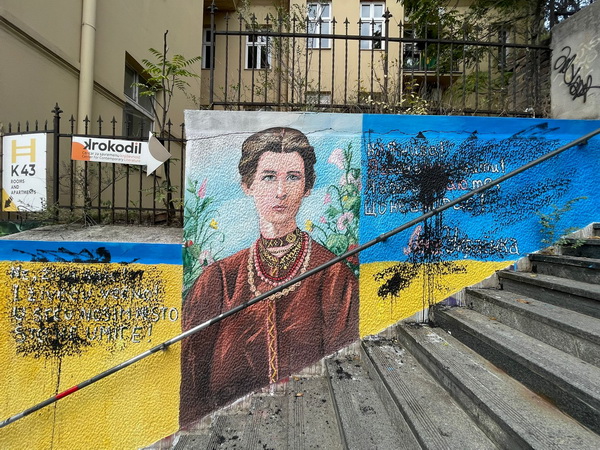
A mural dedicated to the Ukrainian poet Larisa Petrovna Kosach (1871-1913), known as Lesya Ukrainka, painted near the Crocodile Center for Literature in Belgrade, has been vandalized several times in recent months by throwing black paint, writing the Russian military symbol "Z" and right-wing messages, and despite appeals, there are no reactions from the authorities. The destroyed mural of two Russian artists, who currently live in Belgrade, was cleaned at the end of December and repainted in the colors of the Ukrainian flag.
In the organization of the informal group of citizens "Russians, Ukrainians, Belarusians and Serbs together against the war" (RUBS), gathered on social networks, the painting of the wall on the Small Stairs near the Branko’s Bridge was finished at the beginning of October by the Russian artists Anja Gladisheva and Gleb Pushev, who painted a mural with the image of Lesya the Ukrainka and her verses in Ukrainian and Serbian.
After being vandalized only a few days after its creation, and recently restored again, the mural dedicated to Lesya Ukrainka was again attacked during the night of December 26. Unknown perpetrators partially painted over her figure with white paint with three large, black letters Z written on it, and right next to it, threatening, extreme right-wing and chauvinist messages were written in large Cyrillic letters: "This is Serbia!", "There is no place for this!" and "No Nazism here!"
RUBS members cleaned the mural and removed the inscriptions, and then painted the wall next to the mural with yellow and blue paint.
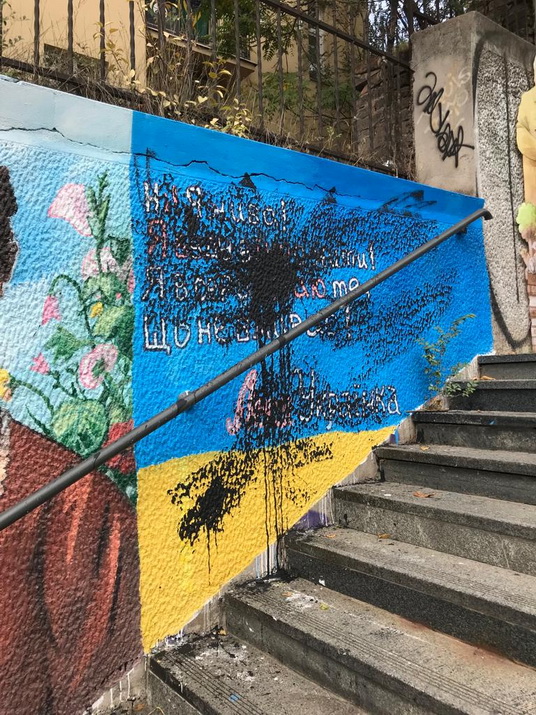
Vladimir Arsenijević from the Crocodile Association, which has already appealed several times to the authorities to react, stated that the attitude towards that mural is an indicator of the general confusion that reigns in the ideological area.
"You have this activity that recognizes the enemy of its ideology in the beautiful female figure of the 19th century poet, and reacts by throwing black paint on her eyes. It is on a symbolic level like having her eyes gouged out. We were really appalled by that efficiency, even those two artists were attacked. And now you have that paradox, two Russian artists, who are anti-war, like all normal people in this world, paint the image of a Ukrainian poetess, and four Serbian hooligans attack those two Russian artists and vandalize that image on the wall. It speaks to the amount of confusion that reigns in the ideological space and the way in which people react, and it is another proof of why we think that even these gentle contents are effective and that they actually show very clearly and send a clear message that is essentially political", Arsenijević said for N1.
Larisa Petrovna Kosač, as the Crocodile reminds us, is one of the progenitors of contemporary Ukrainian poetry. She was a political and feminist activist, a collector of folk art, highly educated and polyglot, and today her image is on the banknote of 200 Ukrainian hryvnia.
The mural with her face was also vandalized at the beginning of October - only a week after it was painted.
"Should we be surprised that not even a week has passed and that mural has been vandalized - someone threw black paint on the verses in Ukrainian. That mural is really impressive and the whole position of the wall is phenomenal, the view from there. There you have practically an entire amphitheater near the former railway station from where you can see that mural. The power that the mural projects is distinct, and it obviously bothered the haters of anything that looks like normality, I must say. It is simply phenomenal that on the one hand - how this fight is going - you have murals dedicated to (Vladimir) Putin, or you have this whole rush of visual pollution on the walls of Belgrade with the image of Ratko Mladić, which glorifies war criminals and writes that Ratko Mladić is a Serbian hero, and on the other side you put the image of a young beautiful woman, after all a poetess from the end of the 19th century, and her verses, and then you get such a reaction that it gets destroyed", Arsenijević said after the first attack on the mural of Lesya Ukrajinka.
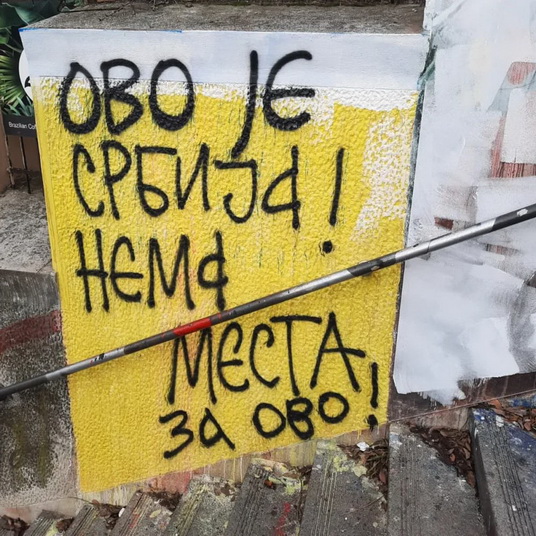
The mural of Lesya Ukrainka contained a quote from her poetic drama in three acts "Forest Song" from 1911: "No, I'm alive! I will live forever! I have in my heart that which does not die!"
In the meantime, the Crocodile Association launched the "Free the Streets/Free the People" initiative, which aims to influence the change of the urban landscape of Serbian cities and towns walls and facades of which have become the scene of clashes between various extreme right-wing groups and a platform for promoting policies close to them. It is a reaction to the "visual noise" and a kind of "ideological-aesthetic war" that has become increasingly visible and present on the walls of the streets of cities throughout Serbia in the last year. The urban landscape is saturated with scrawled messages, stencils, graffiti and murals that directly express and call for hatred, malice, narrow-mindedness, racism, sexism and generally spread various toxic contents creating a society full of violence present at all levels, especially among young people, said the Crocodile, inviting citizens to join by acting in local communities.
One of the main directions of the new two-year Crocodile initiative, goal of which is changing the current practice on the streets of cities and raising awareness of the harmfulness of the chauvinistic and reductive way of thinking about the past, present and future, will encourage the creation of different content on the walls, and it has been planned to paint ten large-scale murals in cities across Serbia which would send gentle and affirming messages.
As a good example of such interventions in public space, there is a mural in Marijupolje, which shows a child hugging a teddy bear and which, although it is located on a half-ruined building in a destroyed city, creates a space of peace around it.
In this context, contact has already been made with local muralists, among whom are some of the most important names of the street art scene, such as Jana Danilović, Artez, TKV, Marija Šoln and Roš.
The next step, which is the biggest challenge, is finding locations and obtaining permits to create the mural.
*Photo: Krokodil
(SEEcult.org)
*Funded by the Stabilisation Fund for Culture and Education 2022 of the German Federal Foreign Office and the Goethe Institut

